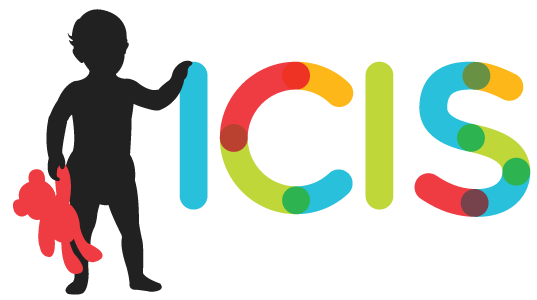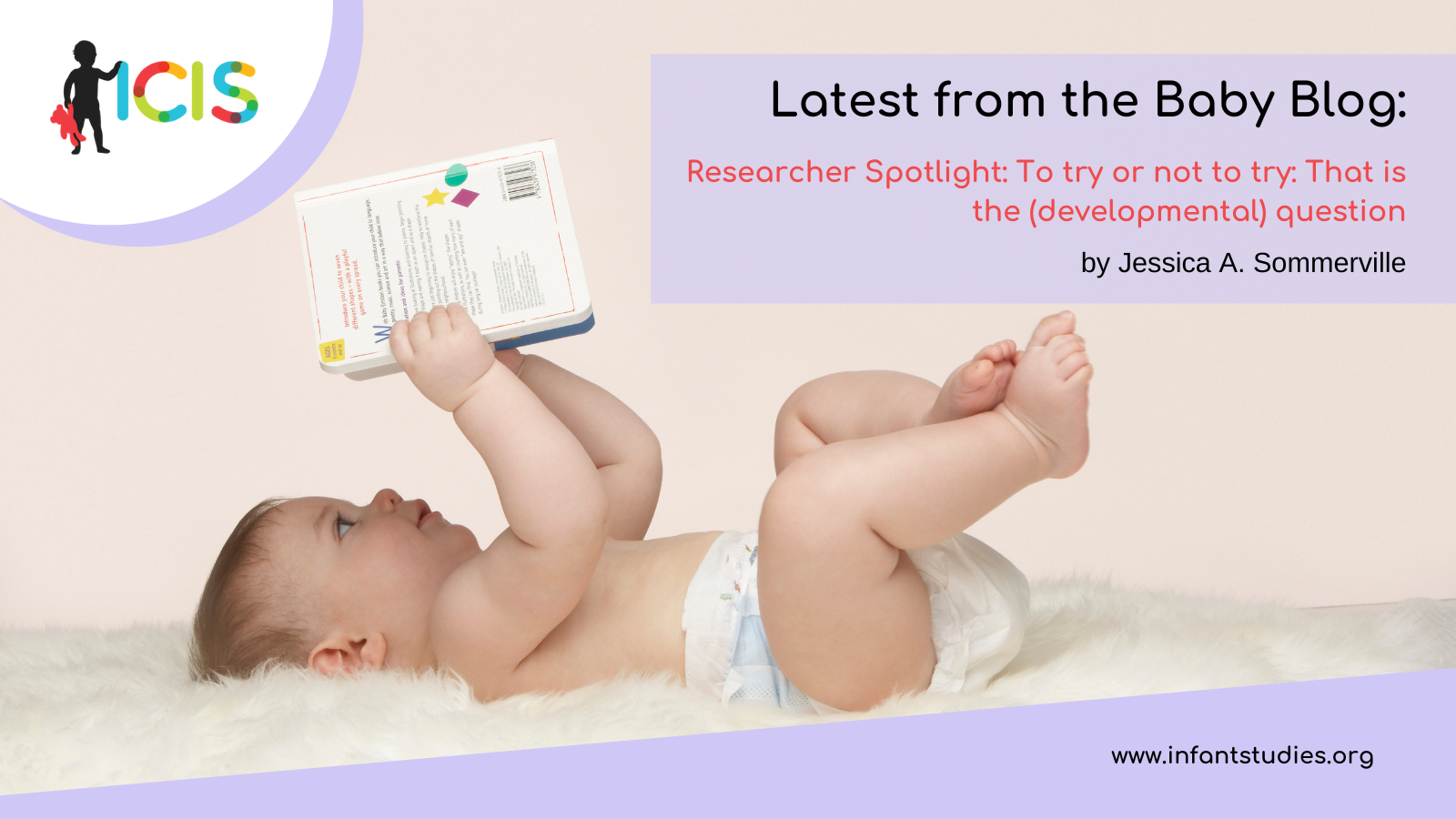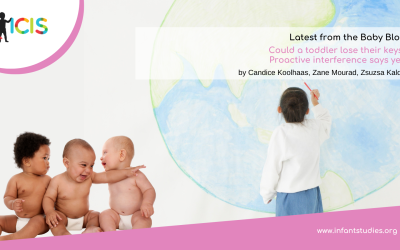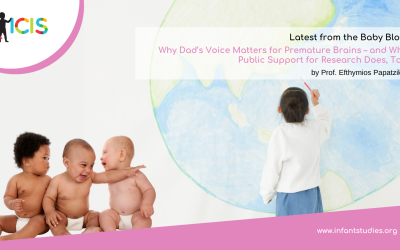Yet, to spend a day watching infants, toddlers and young children, one might think they are quite different creatures when it comes to the world of effort. In fact, the younger members of our species, upon casual observation, appear to be wanton devotees of effort-filled agendas. The 8-month-old infant repeatedly trying to crawl forward but moving backward instead, the 1-year-old child repetitively trying to obtain a toy that is firmly lodged under the couch, and the 2-year-old toddler trying to perform actions that are downright dangerous again and again, like trying to stick a fork in an electric socket. Look at all this (counter-productive) trying!
But I want to let you in on a little secret: despite our everyday observations, infants already traffic in sophisticated decisions about when and how to deploy effort (albeit these decisions likely occur outside their conscious awareness). Indeed, infants are increasingly skilled purveyors in the value of effort and when it best serves their goals. And, further, we, as the caregivers to these young children, provide infants with key lessons about both the value of effort overall, and its utility in the moment.
Parental input socializes infants and toddlers in the value of effort
A critical thing that infants and children need to learn about effort is its overall value: that trying hard is useful because it often (although not always) leads to successful outcomes. While the link between effort and success may be obvious to us as adults, consider the developmental requirements of this task. First, to appreciate how effort is linked to success, infants and toddlers need to associate a felt internal sensation with a concrete outcome, which may not be easy. Second, the relation between effort and success is not always obvious; one cannot always “see” that effort leads to success given often temporal delays between trying and achieving one’s goal.
Fortunately, children of all ages receive reliable signals from parents that highlight the value of effort. In one study, my colleagues and I6 investigated whether the frequency with which toddlers (18-month-olds) hear effort-related talk, and in particular, praise that highlighted the value of effort (what researchers call “process praise”), was associated with infants’ trying on challenging tasks (like trying to stack gears on a free-standing peg, or ejecting balls from tightly fit transparent tubes). We found that infants who heard frequent effort-related talk and process praise tried longer and harder on tasks than infants that heard this type of language less frequently. Critically, this effect was unique to language that highlighted the value of effort; generic praise (such as, “Yay!”) and praise that highlighted the dispositional qualities of infants (such as, “you are so smart!”) were unrelated to persistence. These findings show that what parents say influences how much infants try, presumably because it imparts to infants that trying is valuable.
In another study7, we tested a new idea about the role of effort-related praise in infants’ trying, tied to its timing: we speculated that effort-related praise might be most powerful for promoting infants’ trying behavior when it overlaps both their trying actions and their success. The idea here is that effort-related praise that overlaps both trying and success may serve to causally connect trying to success for infants. Our subsequent studies provided evidence for this hypothesis: effort-related praise was most effective in promoting persistence when it temporally overlapped both trying and success in infants’ actions versus when it occurred during trying alone, during success alone, or at random times. Thus, infants use what they are doing in the moment along with well-timed verbal input to begin to understand the importance of trying for successful outcomes.
Infants and toddlers make savvy decisions about how and when to deploy effort
Of course, no individual – infant or adult – can try constantly: time, resources, and energy are limited. More critically, to be successful one must have a way to decide *when* to try and *how* to try. Our research suggests that infants can do just that.
We have examined this question in two different ways. In one set of studies, we looked at toddlers’ willingness to help another person to achieve her goal, as a function of the amount of effort it required from the toddler. While prior work has demonstrated that infants begin to help others achieve their goals starting in the second year of life2, our question was whether it mattered to infants if it was relatively hard or easy to do so. If infants are savvy in their deployment of effort, they should be more likely to help others when the required effort is low rather than high. Our work demonstrated that toddlers do indeed alter their helping behavior when effort is high versus low. For example, toddlers are much more likely to carry a block across a room to give it to an adult who needs it to complete her block tower when the block is light versus heavy3. Similarly, toddlers are more likely to bring an adult an object she desires when the object is easy for infants to find versus hard4. In other words, when the going gets tough, like adults, toddlers seek to minimize effort.
In other studies5, we have shown that toddlers make sophisticated decisions about whether to pursue their own goals as a function of anticipated effort, and their own expected success. For example, in one study infants were presented with a problem: they could pull a rope attached to a clear box to bring a desirable toy that was inside within reach. However, unbeknownst to infants we made this task impossible by gluing the container to the table. How long infants tried for (i.e., how long they spent pulling the rope) and how hard they tried (i.e., how hard they pulled the rope) depended on whether an adult was previously successful at the task, and how hard the adult had tried to solve the task. Infants tried hardest and longest when the adults’ actions communicated that the task was solvable but challenging to solve versus when they learned that the task was either unsolvable for the adult, or when they learned the task was easy for the adult but found the task challenging themselves.
Summary
Research to date suggests a new picture about the effort-filled world of infants. Infants and toddlers are savvy in how and when they decide to apply effort. These findings are interesting in and of their own right, but they may also help to explain how it is that infants are such rapid learners. To learn quickly, learners must have some way of figuring out when and how to devote their attention, and it appears that infants have this ability from at least the second year of life. Additionally, our findings tell us that the value of effort is imparted to young children in part through what adults and caregivers say and do. These results highlight the fact that effort deployment is malleable, and that we may be able to shape how children choose when and how to try starting early in development. Given the links between persistence and a host of desirable outcomes (such as educational attainment, personal success, and career outcomes8) these findings are encouraging for promoting optimal developmental trajectories.
Together, this new work suggests that adults and older children are not the only ones who have the means to answer the question “To try or not to try”. And, infants appear to come up with answers to this question that are helpful and adaptive to their learning and development.
References
- Inzlicht, M., Amitai, S. & Olivola, C. Y (2018). “The effort paradox: Effort is both costly and valued.” Trends in cognitive sciences 22(4,) 337-349.
- Warneken, F. (2015). Precocious prosociality: Why do young children help?. Child Development Perspectives, 9(1), 1-6.
- Sommerville, J. A., Enright, E. A., Horton, R. O., Lucca, K., Sitch, M. J., & Kirchner-Adelhart, S. (2018). Infants’ prosocial behavior is governed by cost-benefit analyses. Cognition, 177, 12-20.
- Radovanovic, M., Solby, H., Rose, K. S., Hwang, J., Yucer, E., & Sommerville, J. A. (2025). Toddlers’ helping behavior is affected by the effortful costs associated with helping others. Developmental Science, 28(1), e13569.
- Lucca, K., Horton, R., & Sommerville, J. A. (2020). Infants rationally decide when and how to deploy effort. Nature Human Behaviour, 4(4), 372-379.
- Lucca, K., Horton, R., & Sommerville, J. A. (2019). Keep trying!: Parental language predicts infants’ persistence. Cognition, 193, 104025.
- Radovanovic, M., Soldovieri, A., & Sommerville, J. A. (2023). It takes two: Process praise linking trying and success is associated with greater infant persistence. Developmental Psychology, 59(9), 1668.
- Duckworth, A., & Gross, J. J. (2014). Self-control and grit: Related but separable determinants of success. Current Directions in Psychological Science, 23(5), 319-325.
About the Author

Jessica Sommerville
University of Toronto
Jessica Sommerville is a Professor of Psychology at the University Toronto, and director of the Toronto Early Cognition Lab (tecl.ca). Her research focuses on children’s social cognition, social learning and social behavior from infancy through early childhood.




